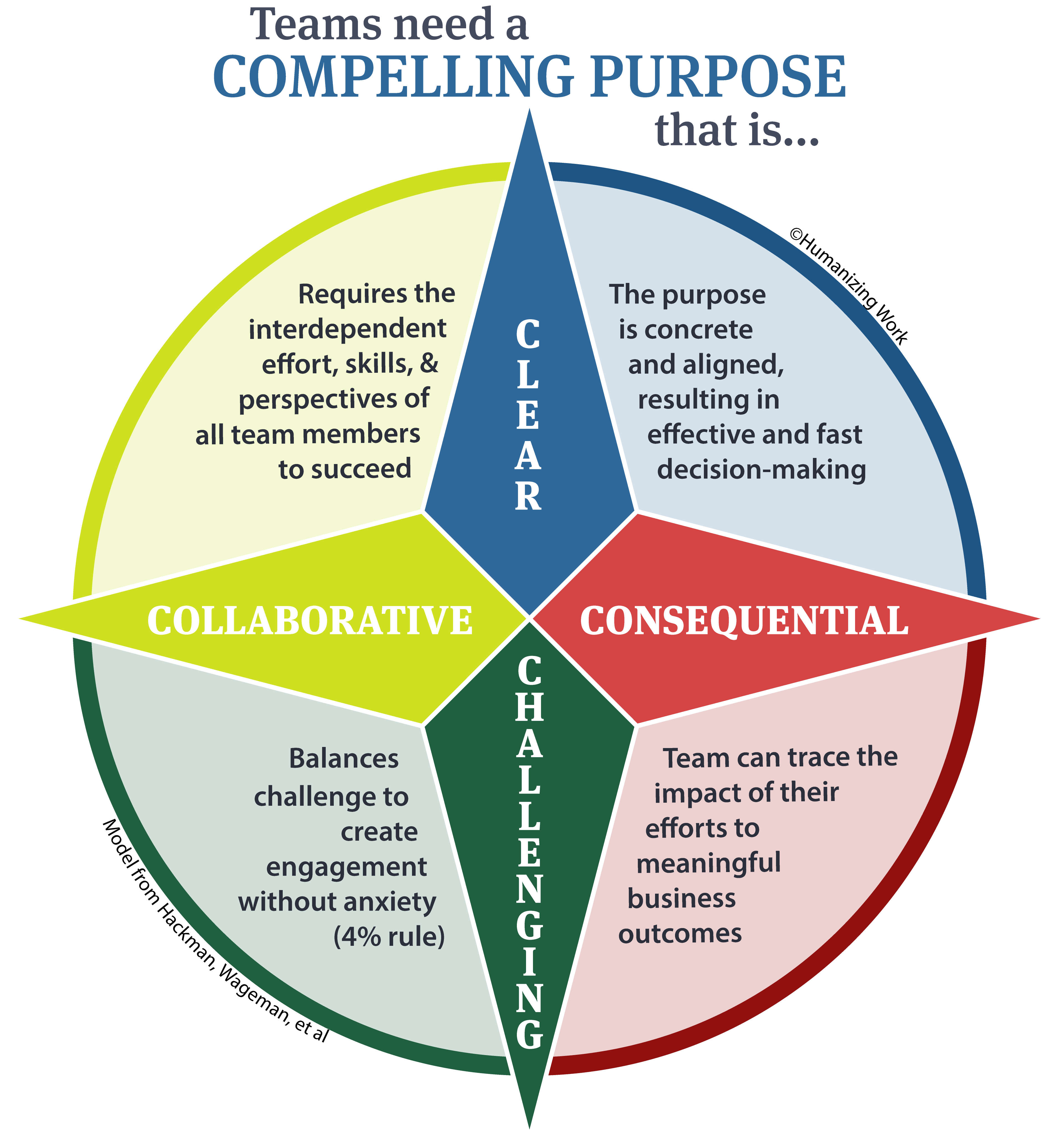A team is a relatively small, clearly defined group of people who work together towards a shared purpose.
In practice, many groups that people call “teams” really aren’t. They’re large, nebulous, or just don’t work together in any meaningful sense.
Research by Hackman, Wageman, et al, along with our own experience shows that successful teams start with a compelling purpose. That purpose is not merely the collective responsibilities of all the team members, nor is it some fluffy abstract thing like “serving customers.” Instead, it needs to be consequential, challenging, collaborative, and above all, clear.
Consequential means that the work of the team is connected to larger, meaningful outcomes for the business. It’s clear to team members how the work of our team matters, how it makes a difference now and in the future for someone that we succeed.
Challenge is a balancing act. Too much causes progress-freezing anxiety or skeptical eye-rolling. Not enough and it leads to social loafing and boredom. We’re particularly fond of the idea of a 4% stretch from the research on flow states. A good compelling purpose will feel like we’re always having to get around 4% better to meet it.
Collaborative means that the purpose of the team requires team members to work in an interdependent way. No one person can achieve the purpose alone, because it needs a variety of skills and perspectives to accomplish.
And finally, Clear means that the team’s reason for existing is concrete enough that everyone can describe it, even if they use different language, and mean the same thing. Team leaders and team members make hundreds or thousands of micro-decisions every day about how to spend their time. The more clear the team’s purpose, the more likely those thousands of decisions will line up towards shared outcomes. In the research, clarity was the biggest differentiator in team performance of these factors.

It’s kind of obvious that a product team ought to have a shared purpose. And it seems pretty straightforward how to derive one.
The way a shared purpose can turn a group into a real team is particularly striking, though, when it comes to leadership teams.
Most so-called leadership teams aren’t really teams. They’re groups. They may have some meetings together. They may all even report to the same CEO or other senior leader. But they rarely collaborate towards a shared purpose.
It’s possible—and useful—for a leadership team to be a real team. But it takes intentionality and effort.
Peter and Richard recently facilitated another Humanizing Work Leadership Team Launch program with a cross-functional group of leaders at a client. Together, that leadership team:
- Identified a meaningful shared purpose that calls for the work of a team
- Determined what, out of all the things they *could* work on, actually requires collaboration and who needs to be involved
- Decided how to work together (something that’s not obvious, since leadership teams are almost always part-time teams)
- Established working agreements to support their collaboration
- Got started on the first increment of value together
That leadership team is now collaborating to build a product line strategy for the products they work on. And that strategy is taking into account the various functions the leaders represent, making it much more likely the functions will be aligned and coordinate well at execution time. Instead of one senior leader crafting the strategy with input from the functions, this strategy is really the collaborative work of a leadership team.
And it all goes back to that shared purpose.
Does your team have a clear, collaborative, consequential, and challenging shared purpose?
Want some help crafting a shared purpose and building a healthy team around it? Visit humanizingwork.com/contact to schedule a free consultation.
Last updated